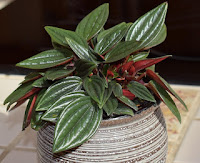Gardening can be very rewarding. Not only is it a great form of exercise, but when done correctly, it can also provide delicious food, beautiful surroundings, and a true sense of accomplishment. However, gardening comes with risks. Knowing how to protect yourself is essential for an enjoyable and safe experience. One of the best ways to stay safe is by wearing the right protective clothing. Proper gear can help prevent injuries caused by exposure to pesticides, the elements, and common gardening hazards.
Protection from Pesticides
Exposure to pesticides can be harmful to your health. Since 90% of chemical exposure occurs through skin contact, wearing protective clothing is crucial when handling pesticides. To minimize risk, wear chemical-resistant gloves, a long-sleeved shirt tucked over the gloves, long pants over unlined rubber boots, safety glasses with side and brow shields, and a wide-brimmed rain hat or hooded raincoat. These precautions help reduce harmful exposure and keep you safe.
Protection from the Elements
Proper clothing can also protect you from extreme weather conditions. Heat exhaustion and sunburn, for example, can be significantly reduced by wearing garments made from tightly woven, quick-drying, and sweat-wicking fabrics. Choose loose-fitting, lightweight, and light-colored clothing made of synthetic blends rather than cotton, silk, or linen, as these fabrics absorb moisture and trap heat. Protect your feet with polyester blend socks, wear a wide-brimmed hat, and use UV-protective sunglasses to shield yourself from the sun’s intense heat and harmful rays.
Protection from Common Gardening Hazards
Proper clothing choice can help prevent injuries while performing everyday gardening tasks. Uneven or unstable terrain, sharp tools, and bites or stings from insects and other critters can all pose risks. To better protect yourself, wear a long-sleeved shirt, long pants, a proper hat, boots with good tread and foot support, safety gloves, safety glasses, and hearing protection. When working with chemicals or in dusty environments, consider wearing a mask that covers your nose and mouth.
While it may take some planning and effort, wearing proper protective clothing can make the difference between a successful gardening experience and a painful one. Making it a routine practice ensures both safety and enjoyment in the garden










